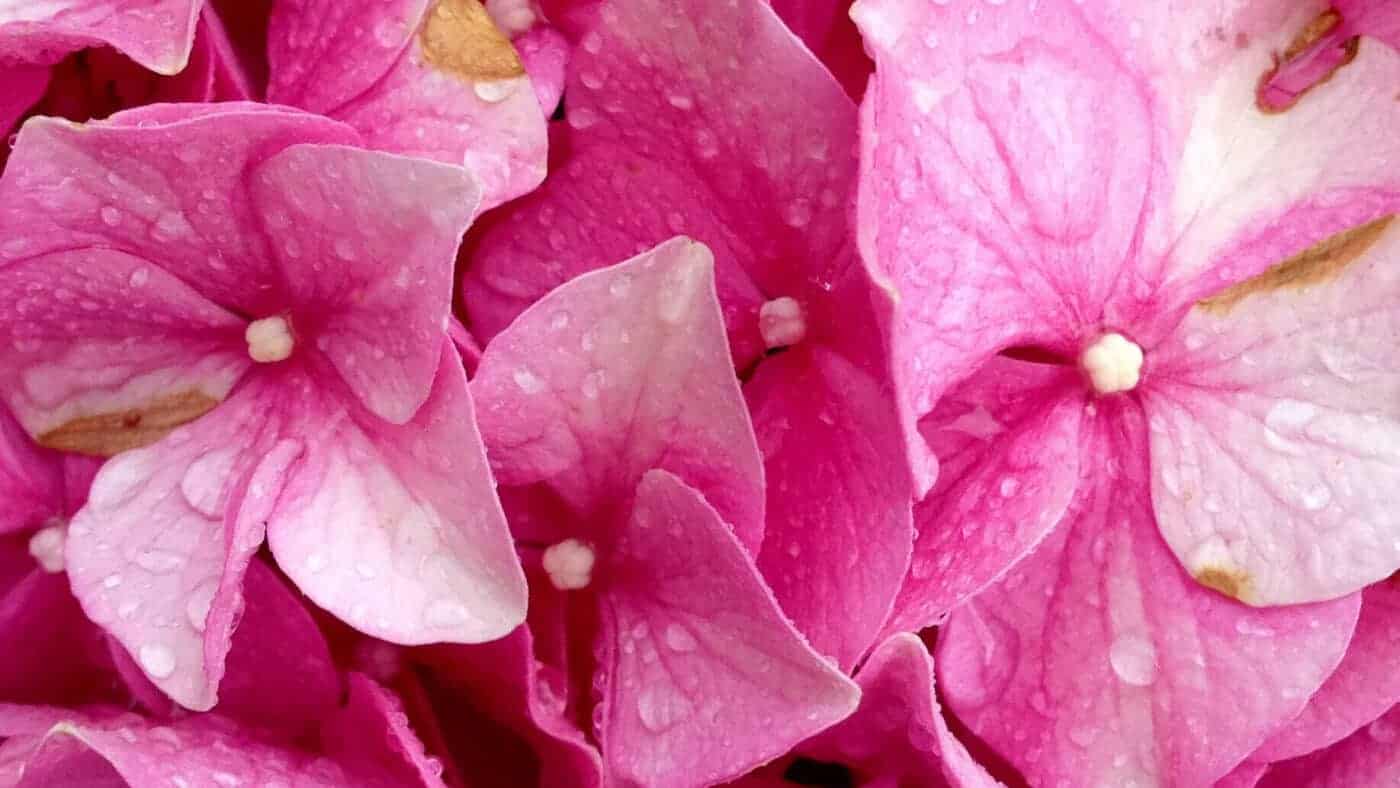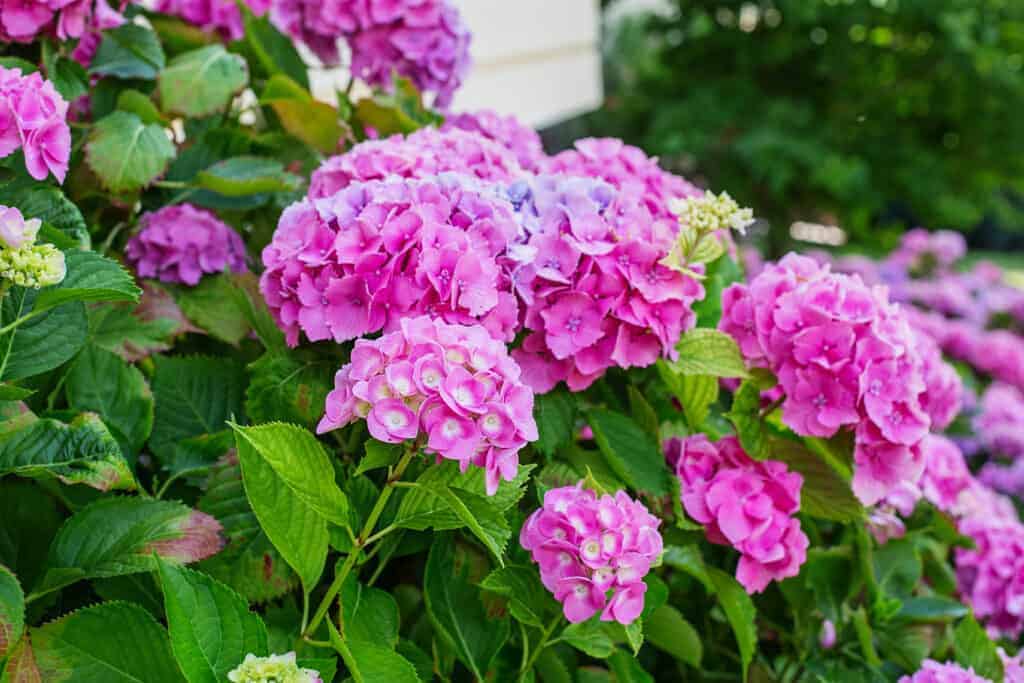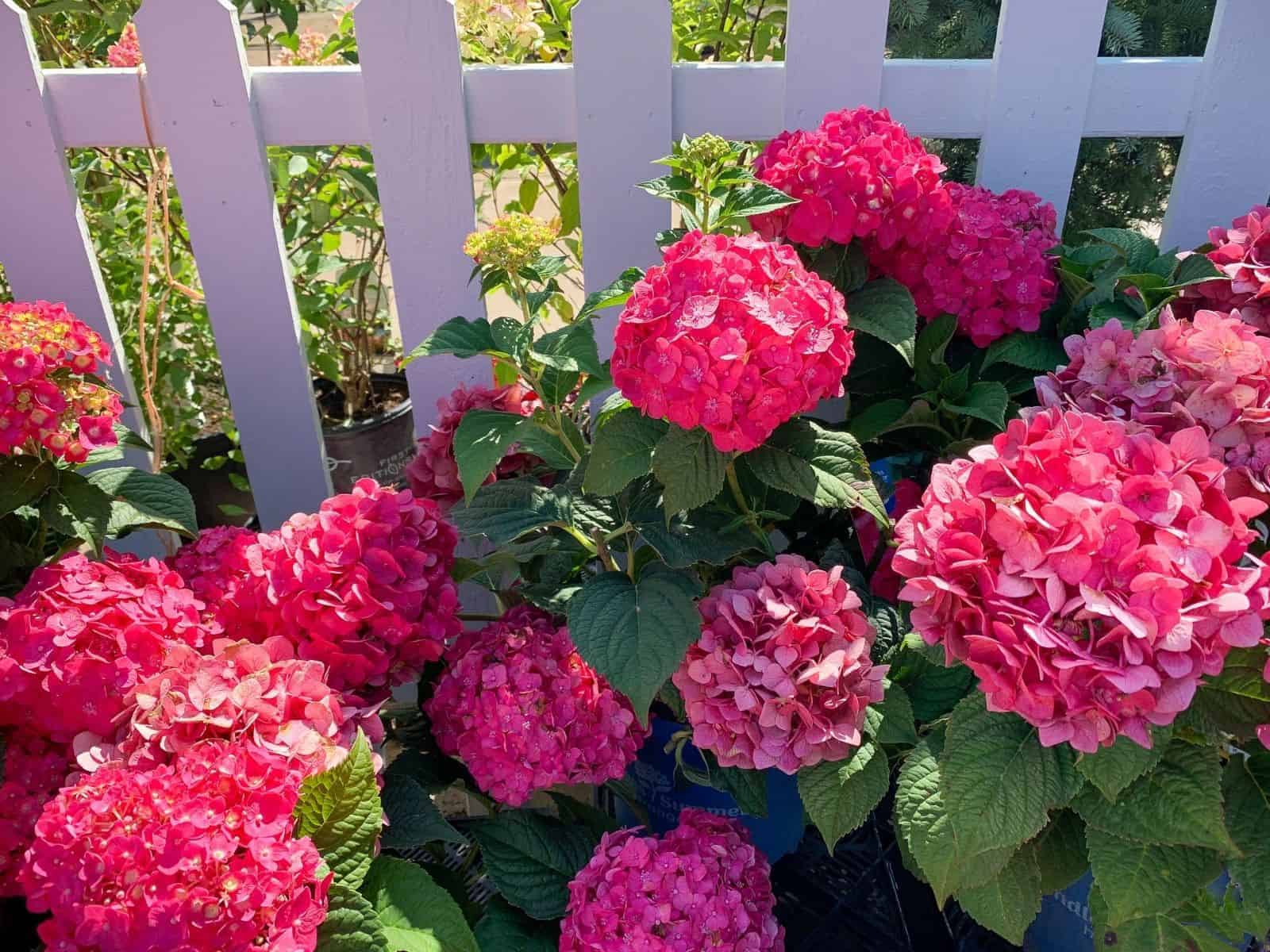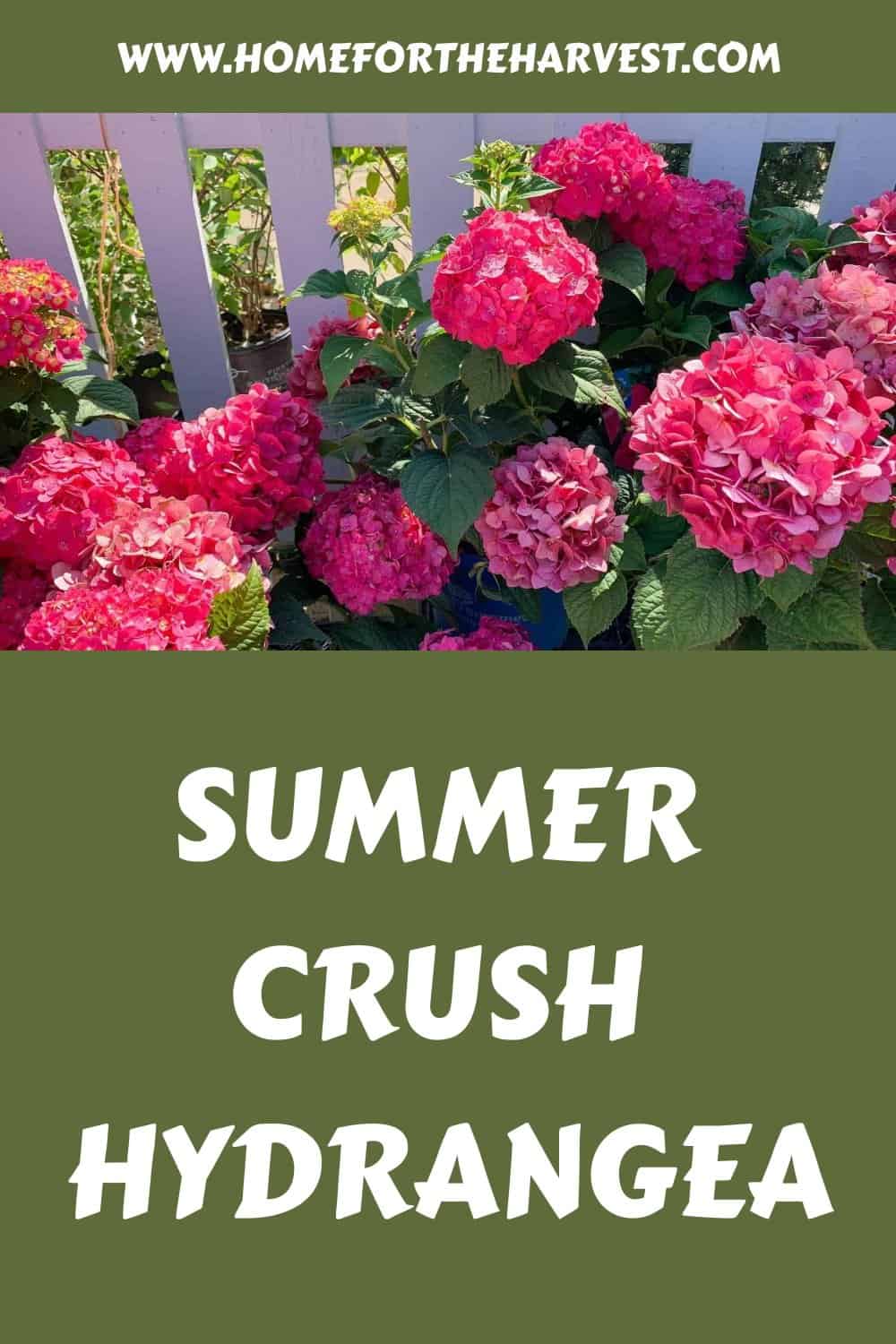Summer Crush hydrangea is a mophead hydrangea cultivar (Hydrangea macrophylla) with bright raspberry-pink blooms. Summer Crush is a re-blooming hydrangea that blooms first in the spring and then again during the summertime. This stunning flowering shrub is naturally compact in the landscape and requires little maintenance. Summer Crush hydrangeas are also more cold-hardy than many other mophead hydrangeas.
Summer Crush hydrangea basics
Summer Crush hydrangea (Hydrangea macrophylla ‘Bailmacfive’) `is a dwarf cultivar of bigleaf hydrangea. This new variety is known for its vibrant red-pink flowers, ability to rebloom (blooming twice in one growing season), and naturally small stature in the landscape. Summer Crush® Bigleaf Hydrangea is offered by the popular hydrangea brand Endless Summer® (famous for the original Endless Summer Hydrangea and their ever-popular Bloomstruck Hydrangea).
Summer Crush hydrangea plants can be grown outdoors in growing zones 4-9, which encompasses most of the United States and southern Canada. This hydrangea is one of the most cold-hardy classic mophead types available. Overwintered flower buds may not survive in the coldest zones, and the shrub would then bloom only in the summertime (no early spring blooms).
One of the main attractive features of Summer Crush Hydrangea is that this shrub stays quite small and manageable in the home landscape. Summer Crush Hydrangeas form a rounded shape, typically 2′-3′ tall and wide at maturity. The dark green leaves are resistant to wilting and the flowers are very attractive to pollinators and beneficial garden creatures (especially butterflies). Summer Crush is quickly becoming one of the most popular varieties of hydrangeas to grow!

How to plant Summer Crush hydrangeas
Summer Crush hydrangeas are easy to plant. The best time to plant them is in the fall or in the early spring. If you live in a climate where you get cold temperatures in the fall, then make sure to plant your hydrangeas in a place that is sheltered from the worst weather.
Look for a planting location in partial sun to partial shade. The best planting spots for Summer Crush hydrangea typically receive full direct sunlight in the morning and shade in the afternoon. This allows the leaves of the plant to soak up hours of direct sunlight to photosynthesize the energy required to grow those vibrant flowers. The afternoon shade helps hydrangea growth by keeping the big dark green leaves from becoming dehydrated.
Dig a wide shallow hole for the root ball. The planting hole should be about twice as wide as the nursery plant pot, but the hole should be no deeper than the potting mix inside the planter. Do not bury the hydrangea any deeper than it is in the planter.
Backfill the hydrangea plant with the soil that came out of the planting hole. Water the whole area deeply after planting. The soil around the plant can be mulched after planting with an organic mulch such as composted yard waste trimmings.
Growing Summer Crush hydrangeas
To keep Summer Crush Hydrangeas growing properly, check them daily for anything that can ruin their growth. For example, check for any dead leaves that can be trimmed, any bugs that need to be removed, or anything else that looks like it will harm the plant’s growth.
Hydrangeas love water. Be sure to water them regularly so your flowers have enough hydration to protect themselves against the heat of the sun. When the sun gets too harsh, it can dry out plants and leave them wilted.
If you get very hot afternoons where you live, consider adding shade for your Summer Crush Hydrangeas bush. Protecting the leaves and flowers from getting dehydrated is important, so putting up a shade and watering it can help the bush grow. Tall trees or other plants can also provide this shade.
If you are unsure about if the afternoons are too hot for hydrangeas, look up what zone you live in, and you will find the advice given to your zone. Gardeners in hot Zones 8 and 9 should likely put up a shade for afternoons. On the other hand, zones 4 and 5 may not experience harsh sunlight (although some cool zones have harsh afternoon sun). Zones 4 and 5 need protective mulch in the winter to help protect from fluctuating cold temperatures.
Fertilizing hydrangea plants
Summer Crush hydrangea plants can benefit from an annual application of well-balanced, slow-release organic fertilizer. Avoid fertilizer for acid-loving shrubs like holly and azalea to keep your Summer Crush flowers at their brightest pink hue. Summer Crush plants are typically fertilized in early spring as they come out of winter dormancy.
Changing flower color of Summer Crush hydrangeas
Summer Crush is a cultivar of Hydrangea macrophylla, which is the type of hydrangea that can change its blossom color based on the pH of the soil. A garden soil test will tell you the baseline soil pH so you can decide how to amend the soil (and change the flower color).
Lime can be used to turn Summer Crush hydrangea flowers into a vibrant pink color. Alkaline soil amendments like dolomite lime raise the pH of acidic soils to bring them to a more neutral level. Garden lime is typically applied in early spring and/or early fall until the desired neutral pH (7.0 for pink) is reached.
Soil acidifiers can be used to turn hydrangea flowers purple or even blue. Acidifiers like sulfur and gypsum lower the pH of soils to produce darker blooms. Some hydrangea fertilizers contain sulfur, so avoid acid-formulated fertilizers if you’d like pink flowers.

Common pests affecting Summer Crush hydrangea
Summer Crush hydrangeas can be attractive to pests, including aphids, spider mites, slugs, and Japanese beetles. One solution is to regularly spray the whole plant down with soapy water. You can also just spray the pests off the plant regularly. Another is to treat the plant with an organic insecticide.
Diseases affecting Summer Crush hydrangeas
Summer Crush Hydrangeas are susceptible to a number of plant diseases, including powdery mildew, bud blight, leaf spot, and bacterial wilt. Most of these are caused or exacerbated by overwatering, too much shade, or too little ventilation within your plant.
To counteract disease, increase air circulation by pruning the plant, pruning its neighbors, or even transplanting it to a better location. You may also wish to decrease watering. Lastly, try an organic fungicide (following instructions on the product).







